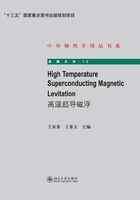
3.3 Developments of railway traffic
The traditional railway has almost two hundred years history(began in 1825). Railway traffic play an important role in human progress.Now, traditional railway traffic will be quickly replaced by HSR.The limitations on HSR traffic will be discussed in this section.
The advent of high speed rail(HSR)is in 1964 with its subsequent improve ments of the operating speed, which brought a new economic era to Japan. The Japanese technology has been significantly improved since then, and nowadays the Shinkansen is running at 250—300 km/h.Before the Chinese HSR, the Japanese HSR operation routes were longest in the world.
Developers of the German Intercity Express(ICE)set the goal that high speed rail should offer an average travelling speed twice that of the car and half as high as that of air travel.The German ICE test train achieved 406 km/h in 1988,and the German ICE system achieved an average speed of 350 km/h.
The French Train Grande Vitesse(TGV)achieved a new speed record of 417 km/h on the long line between Paris and Lyon in 1981. The French TGV system achieved an average speed of 317 km/h.This was followed by another leap in the speed record in 1991,on an experimental run, the French TGV train established the record speed for rail systems of 515 km/h6.It is worth mentioning that a new world rail speed record was set on April 3,2007 by the French SNCF with a speedof 574.8 km/h7on the new East European high-speed line.
By the end of 2012,Chinese HSR(250—350 km/h)completed the traffic line—the"Four North-South and Four East-West Network".China’s HSR total operating mileage reached 19000 km in 2015.At present, more than a dozen countries in the world have operational HSR.China has become the country with the largest HSR operation mileage in the world.The total HSR operating mileage is a half that of the world8.According to the long-term extension plan, the HSR line will have 30000 km in China by 2020.
The rapid development of HSR fully demonstrated its superiority compared with road and airline traffic.Without further development and progress of science and technology, HSR will not be able to satisfy the need for ultra high speed, safety, comfort and other requirements.
Although HSR has reached the speeds of more than 500 km/h, its operating speed is generally at 200—350 km/h. When the velocity of ground railway trans portation is higher than 350 km/h, the train consumes large amounts of energy and produces huge noise.Therefore, in March 1998,the International Railway Associ ation of Innovation proposed that the maximum speed of ground transportation should be 350 km/h.
Such an operating speed is far less than the speed of the Japanese and the German Maglev. With further increased speed, wheel rail HSR will bring a series of problems, for example, increased power consumption, vibration, noise, rail deterioration, etc.Wheel-rail high-speed trains cannot solve the ground traffic problem of ultra-high speed, however, the Maglev can be the best choice.The table 3.3.1 shows the ground rail transit speed.
Table 3. 3.1 The ground rail transit speed


There have been many discussions about the advantages and disadvantages of Maglev6,9,10,11. Indisputably, Maglev is a new ground transportation technology, which is a fundamentally new innovation since the invention of the railway.The Maglev train offers numerous advantages over the conventional wheel-on-railway system:(1)Maglev vehicles are capable of traveling at speed up to 500 km/h, and 600 km/h12,or even theoretically feasible over 1000 km/h13,14,and elimination of wheel and track wear provides a reduction in maintenance costs.(2)The distributed weight-load reduces the construction costs of the guideway.(3)Maglev train has no danger of derailment due to the strong electromagnetic force.(4)Maglev has no noise and vibration caused by the wheels and railway.(5)Maglev has a better climbing ability.(6)Guideway curves require a smaller radius.(7)Maintenance costs are low because no mechanical moving parts.(8)They are less affected by climate.(9)Swift acceleration and deceleration prevents sliding during operation.Table 3.3.2 shows the comparison of Maglev and wheel-on-rail systems.
Table 3. 3.2 Comparison of Maglev and wheel-on-rail systems.

An ultra high-speed transport system can be developed by the Maglev. A Maglev train has no direct mechanical contact between the vehicle and its guideway, and the vertical support, lateral guidance, and longitudinal propulsion at levitation can be achieved simultaneously.
One of the ultra high-speed transport system is the LTS Maglev train in Japan. On December 21,1979,the prototype ML-500 test train reached an unmanned speed of 517 km/h on a 7-km track, which proved the tremendous potential of Maglev trains for high speed.Also, when two trains going in opposite directions passed at the same time, a relative speed of 1026.3 km/h was recorded on November 16,2004.The maximum speed attained was 603 km/h on April 21,2015 which verified that this system had enough capability in high speed operation.
Powell14compared the energy efficiency per passenger mile by Maglev, autos, and airplanes.Maglev energy consumed per passenger km is lesser by about a factor of 10 than that of autos and airplanes.If all auto, air and rail passenger traffic in the United States was made by Maglev at an average speed of 322 km/h, the totalelectrical energy usage would be only about 3 percent of current all traffic electric energy usage.In 1998,the United States announced the transportation equity act TEA-21 for the 21st century to provide the legal form for the development of Maglev transportation technology in the United States, and a Maglev line of 969 km was planned and reviewed.
China, Japan, Germany, United States and other countries have begun to put Maglev trains into commercial operation, commissioning and project construction. We believe that in the near future, Maglev train will bring a new era of traffic.